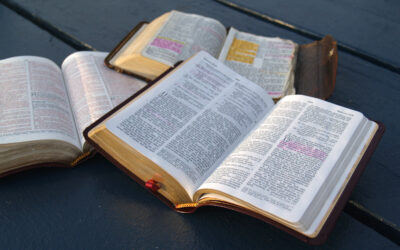The Bible is a collection of books that have been accepted as the word of God. In the early church, there were several writings that were circulated as holy scriptures. These writings included the epistles (from Apostles Paul, James, Peter, and John), the Gospels (Mathew, Mark, Luke, and John) as well as the Prophetic, Historic, and Poetic Books of the Old Testament. When the protestants broke away from the Catholic church, they also canonized the protestant Bible which was different in composition from the Catholic Bible. The King James Bible was also translated during the Reformation and it is distinctively different from the Catholic Bible.
How does the Catholic Bible differ from the King James Bible?
The main difference between the catholic Bible and the King James Bible is the number of books. The Catholic Bible is made up of 73 books (46 in the Old Testament, and 27 in the new testament). On the flip side, the King James Bible is made up of 66 books (39 in the Old Testament and 27 in the New Testament).
The Catholic Bible
The Catholic Bible is also referred to as the Christian Bible or the Holy Scriptures. Its origins predate the birth of Christ because it is made up of the Old Testament (written before the coming of Christ) and the New Testament (based on the life and ministry of Jesus Christ). The Catholic Bible has a total of 73 books divided into 46 books in the Old Testament and 27 books in the New Testament. Out o the 73 Old Testament books, there are 7 additional books that are not found in the Hebrew Old Testament. These books are referred to as deuterocanonical books. In addition to the seven books, there are also some additional texts in the book of Esther and Daniel. Here is the list of the deuterocanonical books.
- Tobit
- Judith
- Esther (with additions)
- Wisdom of Solomon
- Sirach (Ecclesiasticus)
- Baruch
- Letter of Jeremiah
- Additions to Daniel (Prayer of Azariah and Song of the Three Young Men, Susanna, Bel, and the Dragon)
- 1 Maccabees
- 2 Maccabees
The Catholic Bible Canonization Process
Canonization refers to the process by which the collection of several texts and books were recognized as the authoritative and inspired word of God. The canonization of the catholic Bible entailed careful discussion and evaluation of the early church leaders.
The Deuterocanonical books, which are unique to the Catholic Bible, were a subject of debate during the canonization process. The leaders of the Reformation argued that they had erroneously been added to the Bible. However, the catholic councils that met to debate on the issue agreed to maintain the status quo. There were two main councils that helped settle the disputes on the composition of the Bible. These are:
- Council of Hippo (393 AD)
The Synod of Hippo (council of hippo), refers to the council that was held in the North African hippo region in 393 AD. This council adopted the Old and New Testament books of the Catholic Bible that are still in use to date.
- Council of Carthage (397 AD)
A couple of years after the Synod of Hppo, the Council of Carthage met in Carthage (present-day Tunisia). After reviewing the Books of the Bible, they reaffirmed the list of Books that had been agreed upon by the Council of Hippo. This council’s decisions were widely accepted and solidified the canon of the Catholic Bible.
- Papal Confirmation
The canonization process would be incomplete without the authorization of the pope, who is the divine leader of the catholic church. As such, both the decisions of the Council of Carthage and the Council of Hippo were confirmed by the Pope. Following the papal confirmation, the books agreed upon were officially recognized as the Catholic Bible and they are still in use today.
King James Version (KJV)
The King James Version (KJV), also known as the King James Bible (KJB) is an English translation that was commissioned by King James 1 of England in 1611. It is the most popular English translation and it has played a huge role in the development of the English language. A team of 54 scholars worked on translating the KJV over a period of 7 years. They used several sources including the Greek Septuagint, Hebrew Bible as well as the Latin Vulgate. They also used the Tyndale Bible and the Geneva Bible as references.
The KJV was not received well in some quarters but the criticism eventually died off and it became the standard Bible for both religious and secular settings.
The KJV canonization process
Prior to the reformation of the 16th century, the catholic Bible was the only Bible used by Christians. However, one of the elements of the Reformation was a push to revisit the canonization of the Bible. Leaders of the Reformation like Martin Luther believed that some criteria had to be met for a Book to be considered part of the Bible. For instance, the Reformationists believed that the Books of the Bible must be connected to Hebrew or Greek which were the original languages of the Bible. Based on this and other criteria, the Reformationists eliminated the deuterocanonical books theory ending up with what is now known as the protestant Bible.
Around this time, there was also a push by England to establish its Christian identity separate from the influence of the Roman Catholic Church. In 1604, King James 1 convened a meeting of theologians, scholars, and bishops in what is now known as the Hampton Court Conference to discuss the possibility of having an English translation of the Bible. It was at this meeting that the king commissioned the translation of the English Bible which was later named after him.
A group of scholars and translators were drawn from various universities and they were tasked with the translation work. They were subdivided into six smaller groups and each was given a particular section of the Bible to translate. Their main goal was to get an accurate English translation and so they translated it from the original languages (Greek and Hebrew) although they also made references to the earlier English translations (Tyndale Bible and Bishop’s Bible).
Conclusion
In conclusion, the Catholic Bible and the KJV are both based on the original Hebrew texts used in Judaism plus the New Testament books. Both Bibles have the same number of books (and content) in the New Testament but they mainly differ in their composition of the Old Testament. That’s because the catholic Bible includes 7 deuterocanonical books which the KJV does not have.





